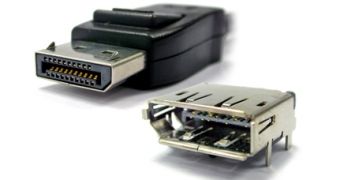The Video Electronics Standards Association (VESA) has recently announced that it has witnessed an increase in the number of computer monitors that adopt the DisplayPort interface to connect to the PC. In the past 12 months, the number of such solutions has grown by 160 percent.
According to data provided by VESA, right now, there are 78 DisplayPort-enabled monitors available from companies such as Apple, Dell, Eizo, Fujitsu, Hewlett-Packard, Lenovo, Mitsubishi, NEC, Philips, Samsung, Sony and others.
“The availability of streaming media and HD-quality broadcast content over the internet means many consumers now demand a TV-like experience on their PCs,” said Bill Lempesis, executive director at VESA.
“These trends are driving the transition to DisplayPort at an astounding rate. The momentum we have achieved over the last year shows that the industry views DisplayPort as the best interface equipped to deliver this experience on the PC.
“We expect to see this momentum escalate even faster as the display manufacturers begin to take advantage of DisplayPort’s advanced features,” concluded the association's representative.
VESA’s DisplayPort standard is a simple, high-bandwidth interface designed to enable both the transmission of digital imaging and audio through a single cable.
Its most important strength is the fact that it's designed to work across the full line of PC components, while also facilitating backwards compatibility with such interfaces as VGA, DVI and HDMI and delivering a maximum data transfer rate to 21.6 Gbps (Gigabits-per-second).
The high bandwidth available translates into increased resolution and higher refresh rates support, as well as greater color depth.
When a single display is connected (DisplayPort 1.2 also supports daisy-chaining monitors), the highest resolution supported is 3840x2400 at 60fps, or 2560x1600 at 120Hz, in the case of 3D displays, with a maximum color depth of 30bpp.

 14 DAY TRIAL //
14 DAY TRIAL //